The first White House meeting between President Joe Biden and President-elect Donald Trump after the latter's comprehensive victory in the 2024 election had the potential to be an awkward affair. But it was soft voices and smiles in front of a warm fire instead.
Trump joined Biden in the Oval Office Wednesday morning, Nov. 13, for a public meet-and-greet between the outgoing and incoming presidents—a traditional feature of the transition between administrations.
As the two men sat together in front of a blazing fire, Biden congratulated Trump and welcomed him back to the White House, saying he would make sure the incoming president is "accommodated with everything you need" for a "smooth transition."
Trump thanked Biden, adding that "politics is tough and in many cases it's not a nice world, but it is a nice world today, and I appreciate it very much."
He continued: "A transition that is so smooth it'll be as smooth as you can get, and I very much appreciate that, Joe."
"You're welcome," replied Biden, as the media was ushered out of the room so the full meeting could begin in private.
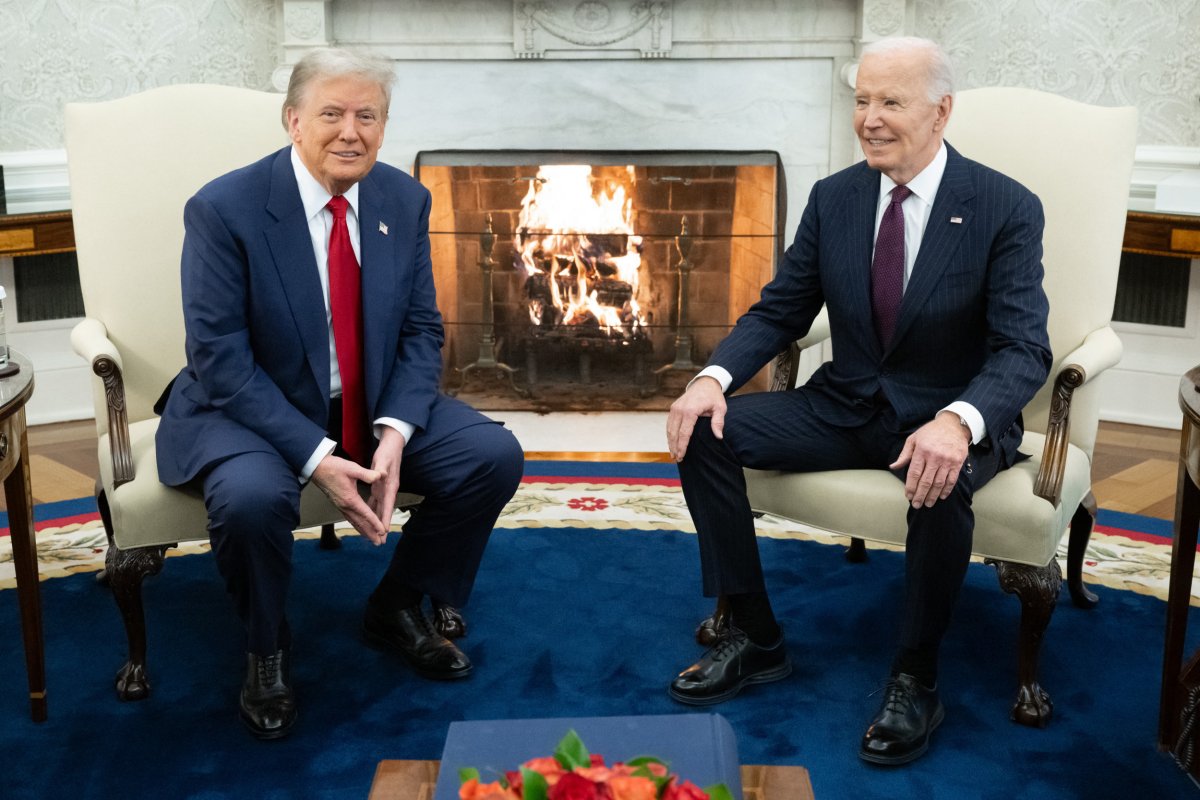
Both Trump and Biden have before today thrown sharp verbal barbs at each other over the years, including accusations of criminality, personality flaws, debasing public office, mental impairment, incompetence, and everything in between.
And they are both known for offhand remarks, gaffes, and tangential rambling when speaking at length. So when the two came face-to-face again in front of cameras, all eyes were watching closely.
Newsweek asked some of America's top body language experts to tell us the silent signals they noticed from Trump and Biden during their White House meeting. Here's what they saw.
Dr. Abbie Maroño, Behavioral Scientist; Director of Education, Social-Engineer, LLC
Both Trump and Biden showed body language indicating mutual respect and confidence. This helped emphasize the commitment to a smooth transition of power.
Both leaders engaged in a firm handshake, a sign of cooperation and respect. Neither individual appeared to dominate the other.
Both demonstrated confidence throughout, with an upright posture, bold but not overpowering gestures, with active listening cues and smiles from both parties further demonstrating their willingness to cooperate.
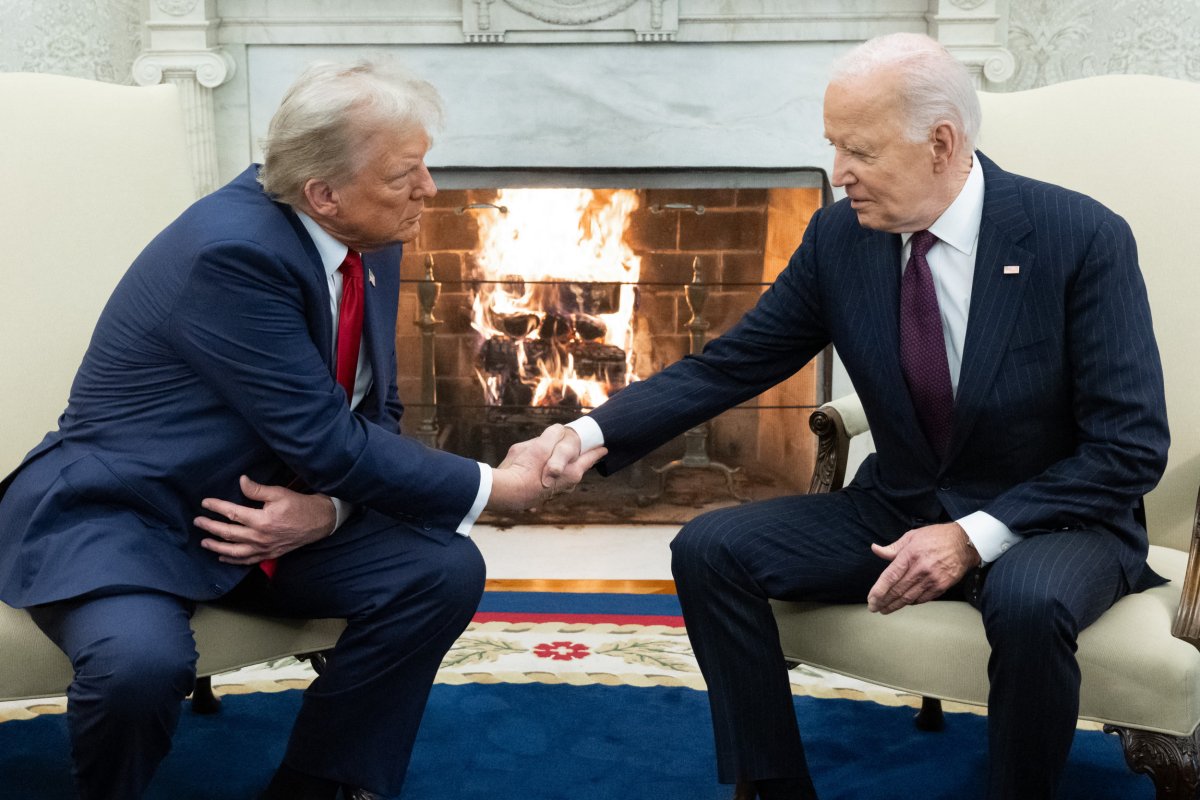
Susan Constantine, Body Language Expert, The Human Behavior Lab
President Joe Biden and President-elect Donald Trump showcased contrasting nonverbal cues during their recent White House meeting.
Trump appeared composed, adopting a relaxed readiness stance with a low steeple hand position. His body language exuded confidence, and his facial expression remained calm and controlled.
Biden, by contrast, displayed a more rigid posed posture with a forced smile—his lips stretched horizontally and brows pinched, signaling discomfort.
The handshake further highlighted their differences. Biden hesitated, his gaze directed downward with minimal eye contact, while Trump confidently initiated the gesture. The timing, and flow, were a bit out of sync.
Biden placed his hand on top in a dominant position, but Trump subtly countered by extending his index finger beneath, signaling a balance of power. Trump's horizontal, cross-body arm suggested a mix of guardedness and strategic intent.
However, a few smiles and shared chuckles afterward helped ease the tension, bringing a moment of levity and unification to the transition of power exchange.

Tonya Reiman, Body Language Expert
In the beginning, Biden extends his hand first, which shows that he's the host. It's still a power move.
However, Trump made sure that Biden's arm was fully extended and he only had to reach a little bit, which is a sign of him saying: I'm still the person in power. While the two of them are speaking, Trump keeps his chin elevated, again demonstrating superiority.
Although both seem to be initially mirroring one another, you'll notice that Trump steeples his hand in a downward fashion and then starts to fidget his fingers.
Biden, still keeping his legs splayed just like Trump, puts his hands on his knees; that is typically a demonstration of somebody who's ready to leave. When you put your hands on your knees, you're getting ready to get up and walk out of the room, so it demonstrated to me that he wanted this meeting to be over.
Eye contact was interesting because typically when two people talk to one another, powerful people will keep eye contact. In this situation, you'll notice that when Biden was speaking, Trump would look. When Trump was speaking, Biden would look.
However, the two never held eye contact, which is a sign, again, of insecurity and discomfort.
When Trump says politics is tough, you'll notice that Biden flexes his left hand out. This is an indication of tension. And in the final moments of this interaction, Biden tends to stroke his legs; again this is a moment of self-soothing.
Trump smirks and swallows very hard—a noticeable swallow—and twitches his hands, again indicating a need to release energy or a demonstration of discomfort.
Jan Hargrave, Body Language Expert, Jan Hargrave & Associates
Body language during the handshake: "It's a battle of who's attempting to control who?"
1. Biden and Trump place their hands in a vertical position during the handshake (this vertical hand placement indicates that both individuals are of equal importance, are well prepared for this conversation and will attempt to allow each person to speak freely).
2. Trump keeps his pointer finger straight and places it along Biden's wrist (this is a control gesture that indicates: "I'll attempt to control you and I want to have the final word."). Trump pulls Biden's hand closer to himself during the handshake (this control gesture nonverbally says: "I'm attempting to pull you into my circle so that I can control you.").
3. Trump keeps his left hand across his body as he shakes Biden's hand. This gesture represents "defensiveness" and is indicative of a person who is not fully receptive to the conversation. This "body-hugging gesture" is an attempt to protect himself from others.
Body language during the conversation:
1. Biden sits slightly leaning forward (indicates interest), and places his hands flat down on his knees (this is a power-readiness, control pose; that indicates: "I'm ready to begin; let's get this show on the road."). Biden's torso slightly turns toward Trump while they are speaking (this pose indicates courtesy, attentiveness, and a willingness to proceed). Biden sits upright (confidence), keeps his shoulders level (decisiveness) and spreads his legs apart (power gesture … taking up more physical space).
2. Trump sits with legs spread (power gesture … taking up more physical space). He points his fingers downward and places his hands in a "downward-steeple gesture," (this hand placement gesture is a confidence indicator). Trump slumps his shoulders ("low-confidence gesture"). Trump is displaying (mismatched) contradictory gestures: slumping shoulders (weakness) with hand steeple (confidence). When an individual constantly displays incongruent (mismatched) gestures (confidence gestures mixed with displacement/discomfort gestures), he causes those listening to him to become skeptical of his words.
4. Trump's body often points (faces) toward the camera (instead of facing Biden) while speaking with Biden. This gesture is quite discourteous and is indicative of someone who does not value another's presence. Trump drops his left shoulder; unevenness of shoulders represents "indecisiveness of person."
5. Both Biden and Trump display genuine smiles during the greeting.
6. Trump nods his head in agreement while talking to Biden (this gesture represents encouragement and acknowledgment).
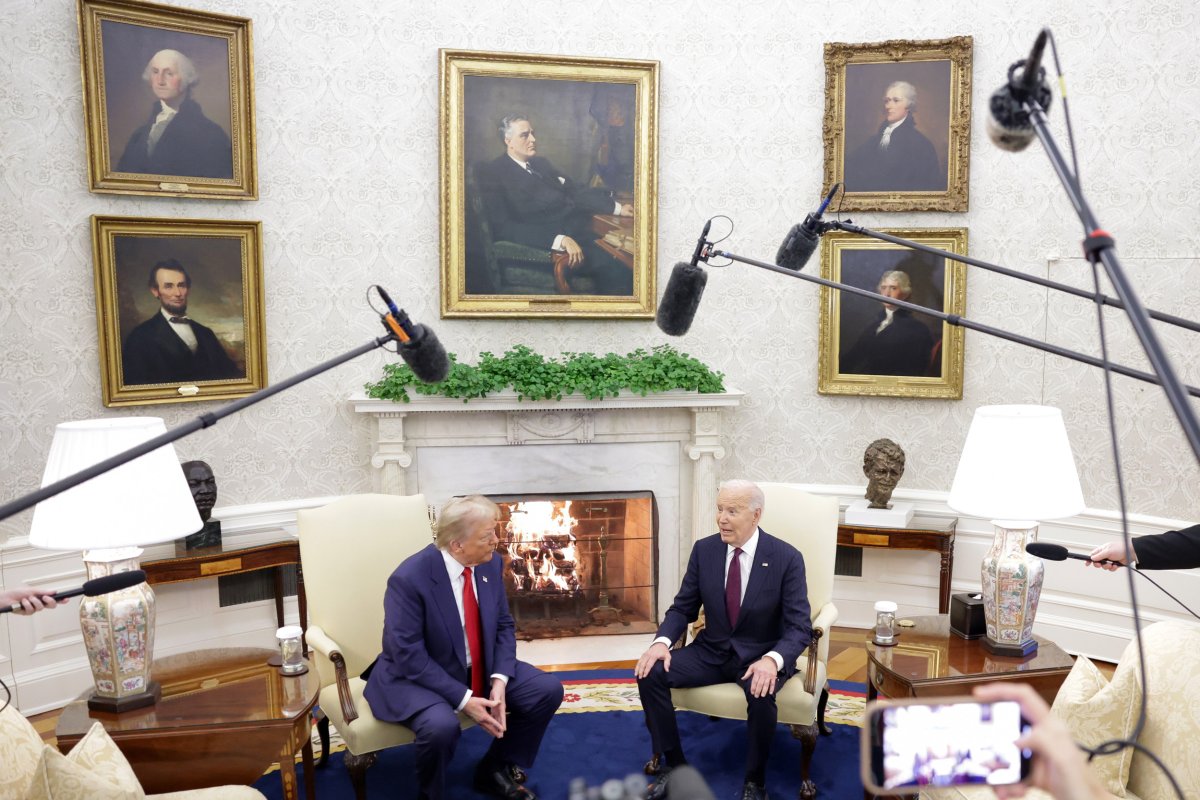
Patti Wood, Body Language Expert
Let's look at the handshake. See how Biden leans forward, his legs in manspread, and initiates, but is focused on his hand rather than looking at Trump first. Biden in terms of etiquette should be the initiator, but should have gotten Trump's eye contact first as this handshake makes him look more submissive.
Trump does his "I am not letting go, I will hang on so you have to let go and I will win," the handshake move he is famous for. Notice how Trump moves in close and looks Biden in the eye in a continued power move as they shake hands. Then they match and mirror the manspread.
As President Biden says he wants a smooth transition and to make sure "you get what you need," he goes back a bit in his chair, places his hands down, and cups around his knees. That is typically a "readiness" gesture with his spread legs showing someone is done, finished, and ready to go.
Trump then, oddly, says that sometimes it's not a very nice world. He does a pointed steeple with his fingers pointed downward in an alpha move, and he continues by saying, "I appreciate it."
The emphasis on a negative and a low volume of energy delivery would indicate how Trump is feeling. I have analyzed the body language in many presidential transition meetings and have to say this "down" energy is so unusual.
His energy overall is low and "down" rather than victorious "up" body language. When a future president is not looking happy and fully confident, and, in fact, looks down and sad, it makes you wonder what Trump has to be unhappy about.
As they finish, and Trump says he appreciates it, Biden is smiling, though there is a sadness in the eyes, and Trump seems sad and resigned. Notice how his weight is slumped forward a bit while Biden is more upright, making Trump look tired.






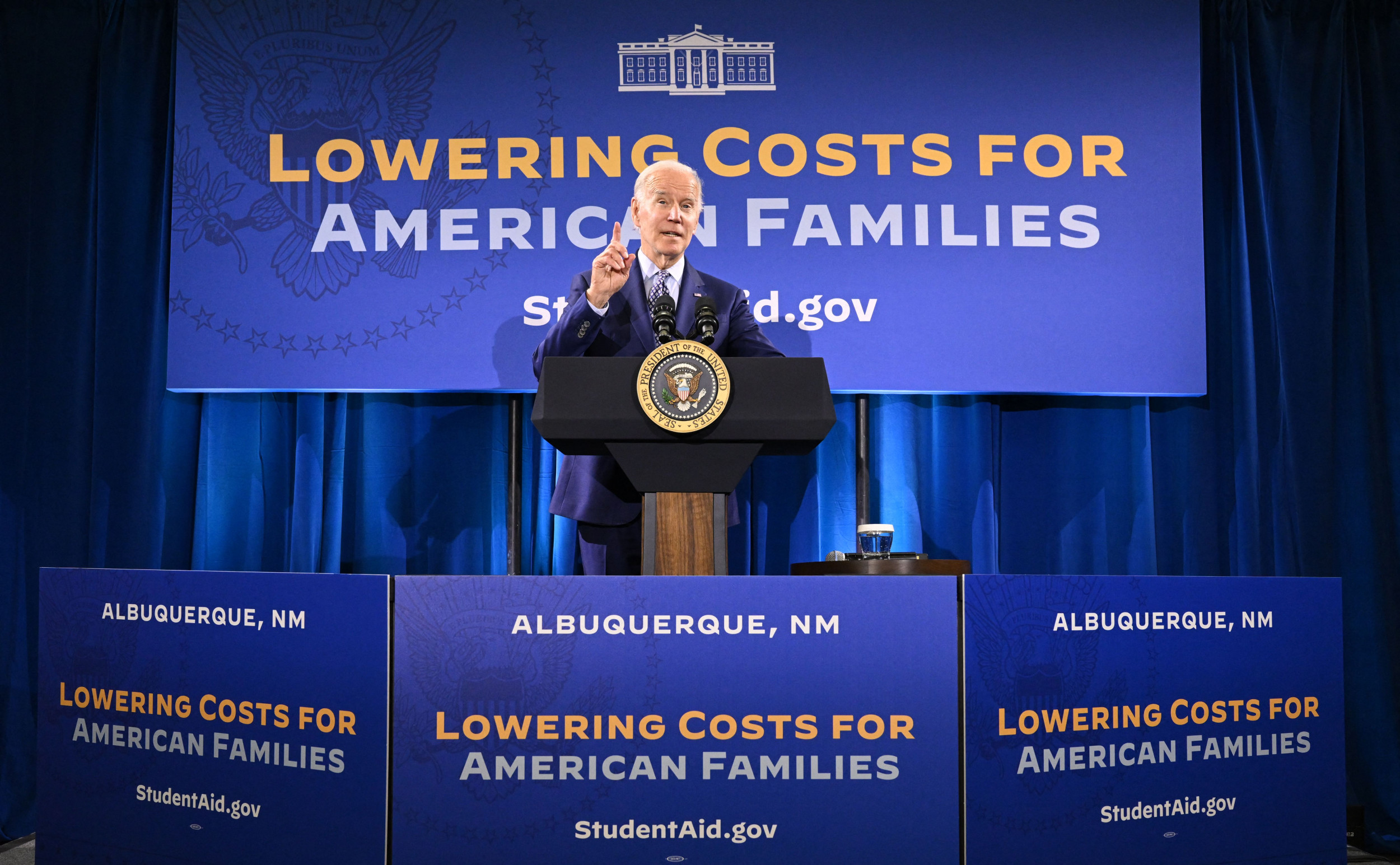


![SOURCE SPORTS: [WATCH] Mets Capt. David Wright Gives Interesting Insight On The Honor Of His Jersey Retirement In Citi Field](https://thesource.com/wp-content/uploads/2025/01/01fs75fy836w8mp4ytwr.webp)
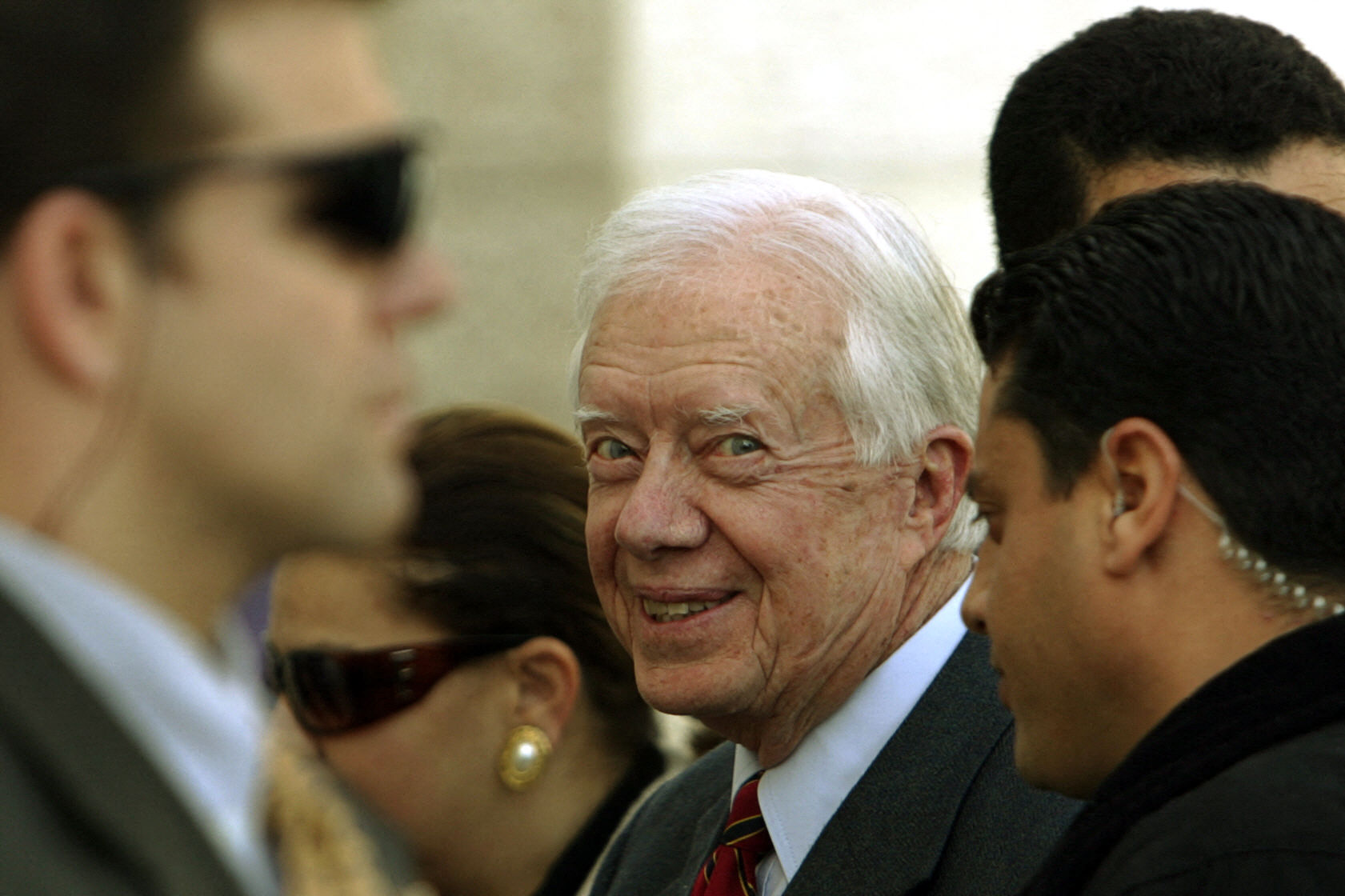









 English (US) ·
English (US) ·